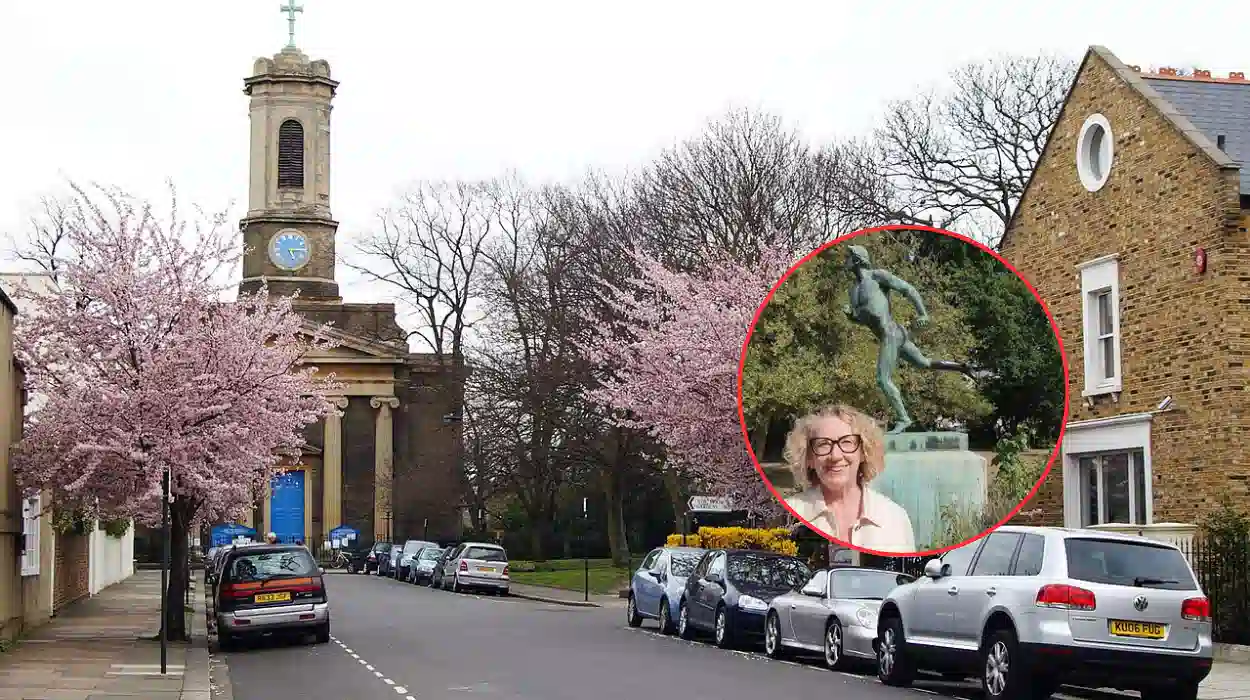Hammersmith and Fulham (Parliament Politics Magazine) – A Grade II-listed statue in Hammersmith and Fulham is set for restoration after a successful fundraiser reached its target to support the revamp.
The bronze sculpture of The Greek Runner, which has been in Hammersmith’s St Peter’s Square Gardens, also Grade II listed, for more than a century, needs to be cleaned up.
As she looks forward to work beginning in the fall, Joanna Edmunds, Chair of the St. Peter’s Square Residents Association, which organized the fundraising, said she has been “delighted” by the support.
In 1926, the Greek Runner was erected in St. Peter’s Square.
Sir William Blake Richmond, a renowned sculptor best known for his portraits and ornamental mosaics in St. Paul’s Cathedral, made it.
Sir William’s family presented the statue to the square after it was cast at the Thames Ditton Foundry in 1879, according to the association’s fundraising page.
Among other things, the £12,886 the association was hoping to raise will be used to deep clean the monument, remove oxidation from its bronze surface, and remove its protective covering.
Hammersmith & Fulham Council, the owner of the square and the statue, is hosting the event on the Spacehive platform and is matching all of the money raised by the group.
The statue is actually beginning to deteriorate because nothing has been done to it in the past 100 years, Melvyn Rodda of Rupert Harris Conservation, which will be performing the work, told the Local Democracy Reporting Service (LDRS). It has turned green, and if it persists for too long, the surface will begin to deteriorate. Therefore, we must stop its decline as much as we can.
Despite minor surface pitting and undulations, he noted the statue is in generally good shape.
Mr. Rodda went on to say that the statue should preferably be waxed every two years after the restoration is finished.
They intend to start the restoration in late September, and it should take two to three weeks.
The council has been “very supportive” during the process, according to Ms. Edmunds.
“The square is Grade II-listed, the statue is Grade II-listed, pretty much all of these houses that overlook the square are Grade II-listed, and I think we’re very conscious locally of our role in preserving the area,”
she told the LDRS.
“There are a lot of people who work quite hard to try and maintain and restore and improve the area, and I think this is absolutely a massive illustration of that. It’s one where you’re really going to see the difference, and the square is very widely used, whether its dog walkers or kids learning to ride their bikes…it is a hive of activity, and it’s very much the centre of the community.
The Greek Runner is central to everything and it overlooks everything,”
she added.
“I think it’s going to look fabulous.”
Cllr Florian Chevoppe-Verdier, Hammersmith and Fulham Cabinet Member for Public Realm, previously said:
“I am grateful to everyone who has donated and supported the preservation of this remarkable sculpture for future generations. Together, we’re helping to protect and celebrate the borough’s rich artistic and cultural heritage, making Hammersmith and Fulham an even better place to live, work and enjoy.”
What restoration works are planned for the Greek Runner statue?
Removing the degraded protective layer that has deteriorated over time. Steam-cleaning the statue to remove dirt and accumulated grime. Applying a new patinated surface to restore the bronze’s visual appeal.
Buffing the statue to a soft sheen to enhance its finish. Cleaning and treating the surrounding stone plinth to remove green staining. Repairing and making good any damaged planting around the statue’s site.
The restoration is expected to take about two to three weeks and is scheduled to begin in late September 2025. Conservation experts have noted that the statue’s surface was oxidizing and corroding, which if left untreated, would cause further damage. The restoration aims to preserve the statue as a lasting landmark and community asset for another hundred years. Post-restoration, it is recommended that the statue be waxed approximately every two years for ongoing protection.


